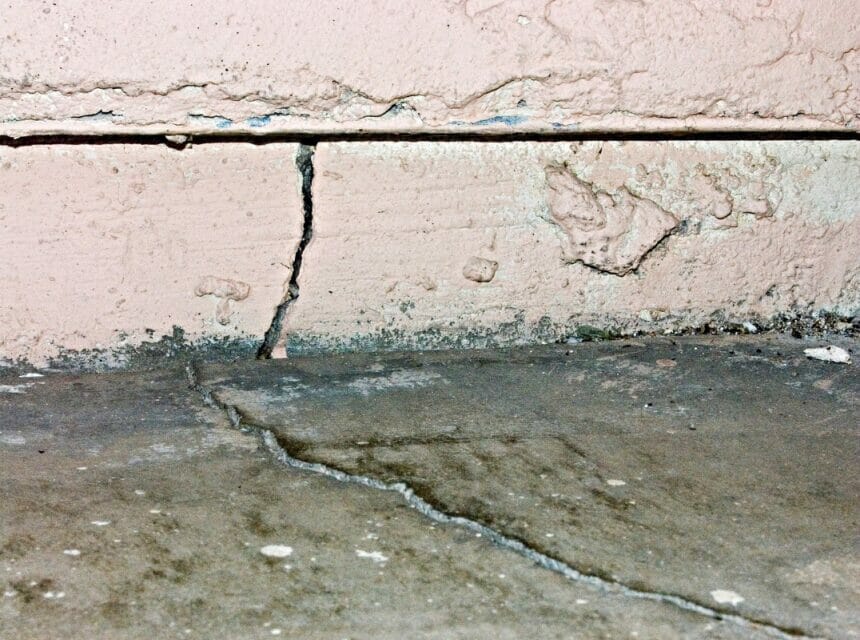When it comes to buying or owning a home, ensuring its structural integrity is crucial. Structural issues, if left unattended, can lead to costly repairs, compromised safety, and even affect the overall value of the property. Recognizing the warning signs of potential structural problems is essential to address them promptly and avoid further damage. In this blog post, we will discuss common indicators that may signify underlying structural issues within a home. By familiarizing yourself with these warning signs, you can take proactive steps to protect your investment and ensure the long-term stability and safety of your home.
- Foundation Cracks and Shifts: The foundation of a home is its backbone, and any issues in this critical component can have severe consequences. Cracks in the foundation, particularly if they are wider than a quarter-inch, can indicate settlement, poor construction, or shifting soil. Look for diagonal cracks, stair-step cracks in brickwork, or cracks accompanied by sticking doors or windows. Additionally, uneven floors or gaps between walls and floors can be signs of a compromised foundation. Ignoring these warning signs may lead to structural instability, water intrusion, or further damage to the superstructure.
- Sagging or Uneven Roof: A sagging or uneven roof is a clear indication of potential structural problems. If you notice any visible dips, depressions, or areas where the roof appears to be sinking, it could be a sign of weakened roof supports or compromised load-bearing walls. Pay attention to sagging ridgelines, bowed rafters, or drooping ceilings. These issues may stem from excessive moisture, inadequate support, or faulty construction, and should be addressed promptly to prevent further damage and potential collapse.
- Cracked or Bowing Walls: Cracks in walls are not merely cosmetic issues; they can be symptomatic of underlying structural problems. Horizontal cracks, bulging walls, or gaps between walls and ceilings could indicate issues with the load-bearing capacity of the walls, compromised foundation, or poor construction. Pay attention to cracks that extend from the corners of windows and doors or those accompanied by doors that no longer close properly. These warning signs may suggest the need for professional intervention to assess and rectify the structural integrity of your home.
- Settling or Uneven Floors: Floors that slope or feel uneven underfoot can indicate foundation settlement or structural issues. If you notice noticeable dips or waves in the floor, it’s important to investigate further. Changes in the floor level between rooms or visible gaps between the floor and baseboards can also be indicative of underlying problems. These issues may arise from soil shifting, inadequate support beams, or deteriorating subflooring. Ignoring these warning signs may lead to further structural damage, compromised stability, and potential safety hazards.
- Doors and Windows That Stick: Doors and windows that stick or no longer open and close properly can be more than just a nuisance; they can be red flags for structural issues. As a building settles or shifts, door frames and window frames can become misaligned, resulting in difficulty when operating them. Excessive moisture or swelling due to humidity may also cause doors and windows to stick. However, if the problem persists or worsens over time, it may suggest a deeper structural problem. Addressing these issues promptly is important to maintain the functionality and security of your home.
- Cracks in the Drywall: Cracks in the drywall are another warning sign of potential structural issues. While small cracks can be common due to normal settling of a house, it’s essential to pay attention to the size, pattern, and location of the cracks. Wide, l ong, or recurring cracks should raise concerns. Vertical cracks can be a result of normal settling, but horizontal cracks, especially those accompanied by bulging or leaning walls, may indicate more serious problems such as foundation issues or structural instability. Cracks that appear near doors, windows, or corners should also be examined closely, as they could be signs of stress or shifting in the building’s structure. It is advisable to consult a professional to evaluate the severity of the cracks and determine the appropriate course of action.
- Plumbing and Drainage Problems: While plumbing issues may not immediately seem related to structural problems, they can be indicative of underlying issues. Persistent leaks, water stains on walls or ceilings, or water pooling in certain areas can lead to structural damage over time. Excessive moisture can weaken the building materials, compromising their integrity and causing rot, mold growth, or even termite infestation. Additionally, recurring plumbing problems such as clogged drains or backed-up sewage can be a sign of poor drainage or pipe misalignment, which can negatively impact the stability of the foundation. It is essential to address plumbing and drainage issues promptly to prevent further damage to the structure and ensure a safe and healthy living environment.
- Exterior Signs of Deterioration: Examining the exterior of the house can provide valuable insights into its structural condition. Look for signs of deterioration such as crumbling or missing bricks, decaying wood, or damaged siding. These issues can be caused by moisture intrusion, insect infestation, or age-related wear and tear. Failing to address these exterior problems can result in compromised structural integrity, water penetration, or even compromised insulation. It is important to address any visible exterior damage promptly and consider hiring a professional for a thorough inspection to identify the underlying causes and prevent further deterioration.
- Unusual Sounds and Movements: Pay attention to any unusual sounds or movements within the house. Excessive creaking or cracking sounds when walking on floors, noticeable vibrations or shaking of the structure, or doors and windows rattling without external factors can indicate structural problems. These signs may suggest weakened supports, compromised beams, or unstable foundations. If you observe such phenomena, it is crucial to consult a structural engineer or qualified professional to assess the situation and recommend appropriate measures to ensure the safety and stability of the home.
Understanding the warning signs of potential structural issues in a home is vital for homeowners and potential buyers. By recognizing indicators such as foundation cracks, sagging roofs, cracked walls, settling floors, sticking doors and windows, cracks in drywall, plumbing and drainage problems, exterior deterioration, and unusual sounds and movements, you can take timely action to prevent further damage and costly repairs. Remember, it is always better to address these warning signs early on to mitigate potential risks to the structural integrity of your home. Seeking professional help and conducting regular inspections can help identify and resolve issues promptly, ensuring the long-term stability, safety, and value of your property. By prioritizing structural integrity, you can have peace of mind and enjoy a secure and comfortable living environment for years to come.
For questions or concerns regarding your home, please contact Axium Inspections Premier Structural Engineer Partner LEVEL ENGINEERING (720) 706-8540





















